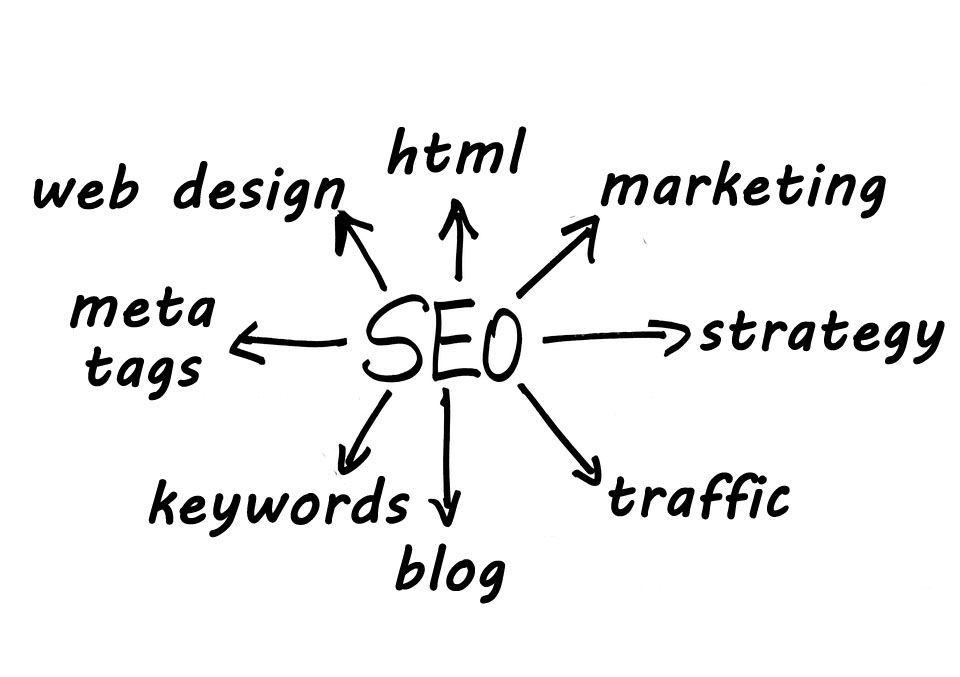



SEO (Search Engine Optimization) is a comprehensive development and promotion of a website to get it in the top of the search engine results pages (SERPs) for chosen queries to increase traffic and further profits.
The higher a website ranks in search results, the more users visit it. Therefore, there are activities that have a huge impact on the results of promotion:
Optimization rules are set up by search engines. Each of them uses and regularly updates its ranking algorithms that consist of a variety of factors. Although the exact formulas are kept secret, SEO experts know what factors matter the most. By influencing them, it’s possible to increase the position of a website in search results for specific keywords.
User behavior and experience, as well as the load speed, are crucial for the results of website promotion. With the development and сomplication of the algorithms, the value of the above factors is steadily increasing, which improves the quality of search results. Search systems tend to show the most helpful content according to a user’s query. Therefore, website owners need to publish the most engaging content for their audience.
Even if it works today, there is no guarantee that it will work tomorrow. Search engines are always changing and getting rebuilt. SEO approaches are changing together with them.
Let’s find out what the SERP is using Google as an example. We typed in the query “samsung galaxy s8” and got 306 million results. Here’s what we saw in the SERP:
1 / Google AdWords block. Ads are shown depending on the user’s search query and resemble organic search results. However, these are paid ads.
2 / The Google Shopping block with product cards.
3 / Organic search results: these are the results of the search query and they make the main traffic source for a website.
4 / Additional opportunities for optimizing search snippets. The example shows rich snippets for product reviews.
5 / People also ask boxes with sets of questions that relate to the original search query.
6 / Top Stories lists with the content submitted to Google News.

Search engines always strive to improve the quality of search results, so it’s necessary to promote a website in an integrated manner. That means working with the technical side, content as the main factor, convenience, usability, the correct display on different devices and generating organic links.
All SEO works break down to two subcategories: internal and external optimization.
Works on the internal optimization improve a website and influence its rankings directly.
The works are divided into the following stages:
Internal optimization is the most time-consuming part of the work, it must be done regularly. It’s internal optimization that defines the success of your project.
A website must be of good quality, quick, user-friendly, and informative, providing comprehensive information that users are looking for.
External optimization is growing backlinks, i.e. links to a website from other resources.
While search engines are developing penalties for buying backlinks, finding a good donor website remains a problem. Links from trusted, thematic, and spam-free resources work best.
In the process of the external optimization, a list of “donor” websites is formed, anchor link texts and the link environment are crafted, then the links are published.
In order to grow the number of organic quality links, amplify methods that do not contradict with the following rules:
The optimization process also includes competitor analysis that allows to find out what a website lacks.
SEO experts roughly divide optimization methods into White Hat, Gray Hat, and Black Hat, depending on whether the requirements of the search engines are respected. Each method involves techniques that influence web crawlers.
Any type of SEO involves using techniques that influence web crawlers directly or indirectly. However, white-hat SEO experts and marketers do not break the rules. They respect the guidelines of search engines to creating good websites and optimizing them. The information is publicly available in the Google Search Console Help Center.
There are many ways to promote a website to increase its traffics, for example, pay-per-click ads, social media marketing, PR, or crowd marketing. The choice of methods depends on a project type, its goals, and the budget. However, SEO rightly makes the basis of promotion.
Traditionally, SEO is the most reliable and promising marketing technique, as a website is developed and improved during the works. If a website ranks high for a high-volume keyword, it will constantly attract new visitors. Organic traffic, as experience shows, converts best. Investing in SEO certainly pays off.
Let’s compare SEO with its main competitor – pay-per-click ads (PPC.)
| SEO | PPC |
| - Delayed results | + Instant results |
| + Traffic doesn’t depend on the budget | - You have to pay per click |
| - Fixes take time | + The ability to adjust an ad campaign quickly |
| + A long-term effect, organic traffic keeps coming in even after the works are finished | - Website traffic drops down when ads are stopped/paused |
| + It’s possible to rank for more keywords without increasing the budget by adding them to the texts. | - Adding more keywords increases the costs |
| - No guarantees for stable rankings for the necessary keywords | + Fixed rankings |
The truth is, SEO and PPC solve different problems. Using them together doubles the effect: it increases visibility due to behavioral factors, it allows to reduce negative brand messaging and manage brand reputation, to test changes, to reveal the most profitable keywords, to survive the off-season slump, and much more. After all, SEO is the main traffic-generating method; all the others are supportive and secondary.
Facing a strong competition and a complex market, one can’t do without services and virtual assistants.
The most popular of them are:
SEO the main way to drive traffic to a website, that exists since the creation of search engines. Claims that SEO is likely to disappear began to show up at the beginning of its development – since 1997. However, at each stage, SEO changes and adapts to the new ranking algorithms, filters, and factors. There will be demand for search engine optimization as long as people search for information on the web.
It’s possible to dive into SEO and internet marketing on your own, if you wish. Track the latest news and trends, continually improving your skills. However, if you are short for time, the SEO.RUN team is always there to provide you with high-quality assistance. The price for SEO promotion starts from $ 990 per month depending on the chosen pricing plan.
Follow us on social media to be in the loop on the latest updates.